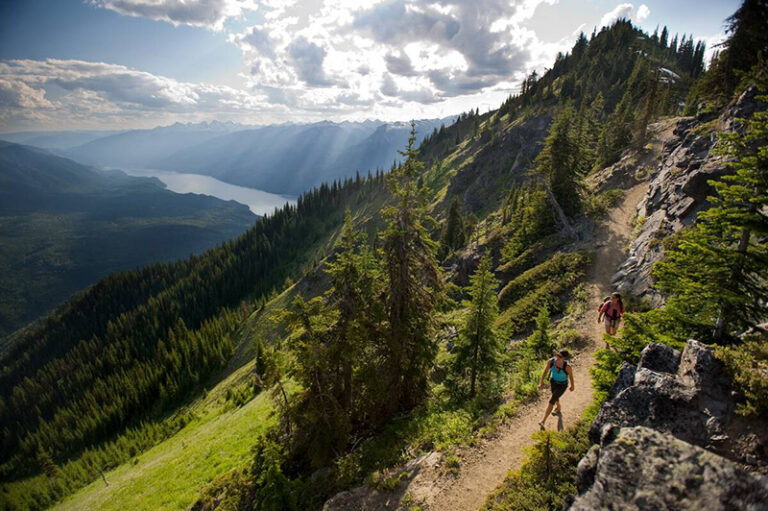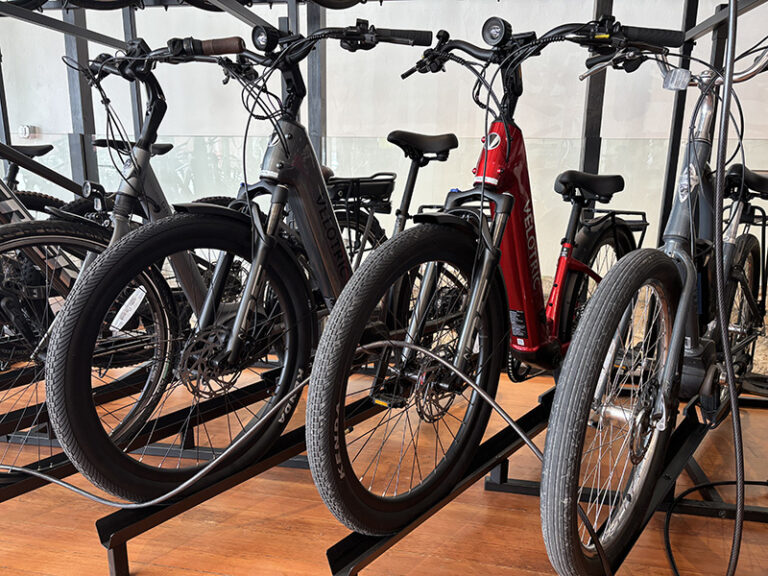AFTER MOST CYCLISTS GET comfortable riding more than 20 miles or so, there’s something alluring about the idea of riding a century ride. A century ride is typically 100 miles. If you can ride a century and feel mostly normal the next day, then you’ve achieved the goal. If riding your first century is a goal this year, then here are three steps to achieving this.
STEP 1: DEFINE SUCCESS.
Given enough time, most cyclists could finish a century with very little preparation. In fact, for some people, just riding 100 miles, regardless of how long it takes, will satisfy this goal. But if you are a first-timer riding an organized century, then there will likely be a time limit on the course. An “organized” century means that there is support for the participants: water stops, restroom facilities, maybe food, and even mechanical support. So figure out how long you want a century to take you. There are a lot of factors involved, but at the low-end, assume 12 mph average, with stops included. That gives you about eight hours for 100 miles.
STEP 2: GET YOUR BIKE DIALED IN.
If you are spending eight hours on your bike, it must be comfortable. Assuming you have slowly built up your time on the bike, after riding eight hours, you should expect to feel tired and maybe a little muscle-fatigue soreness. But you shouldn’t feel stiff or sharp aching muscle soreness. If your neck, back, shoulders, knees or butt hurt painfully, then you’ve not dialed in your bike.
The most common fit issues that will make 100 miles miserable are around saddle height and reach. If your saddle is too low, your knees will ache; if it’s too high, your Achilles tendons may hurt. Reach refers to how you are extended over your bike and is dictated by the type of handle bars you have and where they are located. Getting just the right bars at just the right placement is critical to comfort.
Bar placement also affects how you sit on your saddle, which also must put your knees, back and butt in a comfortable position relative to your pedal stroke. While comfort is super important, you need to make sure you don’t overdo it. Riding a century in under eight hours also requires that you take performance into the bike-fit equation. There are many ways to figure out bike fit. One way is to go to a bike shop and pay for a fitting. Be sure they understand your goals.
Another option is to find cyclists that ride big-mile days and ask them about how they evolved into the bike fit that they prefer. Have them watch you ride your bike and listen to their advice.
Carry basic tools with you so you can make minor tweaks as you feel discomfort. Once you get close to dialed in, you’ll be amazed at how seemingly insignificant adjustments—such as the seat fore or aft a couple millimeters, or the bars rotated a degree up-ward—make a huge difference.
There is also good advice online. In any case, as with all bike-related opinion, be aware that any given fit system, whether it’s online, in a book, or at a bike shop, is “the best one.” Ultimately, you decide which one works for you by riding. A lot.
STEP 3: RIDE A LOT, AND PAY ATTENTION.
At first, you’re looking for time in the saddle. Don’t focus on fast or hard or hills, just get used to doing multiple hours on your bike. Start with an hour and work your way up.
This portion of your training is about finishing your bike fit while getting used to many hours in the saddle.
And speaking of saddles, it’s normal to feel a bit of butt soreness as you increase your time on a saddle. But again, sharp muscle pain or sores are not normal. Be prepared to try out different saddles to find your perfect match.
Keep increasing your time on the bike while paying very close attention to how you feel before, during and after your ride. As you ride longer distances, you’ll get a feel for the kinds of food you prefer and how important staying hydrated is. The importance of keeping properly hydrated cannot be overstated. Pay heed.
Some good advice around food and hydration is to consume a little bit at a time, but consume often. Don’t wait until you feel hungry or thirsty. Experiment with different foods and hydration solutions. You can find all sorts of expensive pre-packaged “performance” foods, which generally provide the energy and electrolytes your body needs in a convenient little package. But remember that “normal” food also works and generally tastes better.
If you pay close attention to how you feel and make small changes to your bike, your routine, and your food/water intake, your mileage and speed will slowly increase over time. You’ll also probably pay more attention to your diet and rest patterns when you’re not riding.
Before you know it, you’ll be able to ride 100 miles with relative ease and you just might begin to seek out other long-haul bike adventures.













